Drinks to go in small stores can help create footfall and grande profits. So how are retailers flogging their flat whites and slushy blues?
When you look at drinks to go overall the official stats show that the UK is still a nation of confirmed latte lovers. According to Mintel, coffee shop sales grew 37% between 2011 and 2016. This fixation on flat whites and other frothy coffees means we’re still a long way from reaching ‘peak coffee’ any time soon.
In fact, the market has enjoyed its biggest period of growth since 2008 – with sales between 2015 and 2016 rising 10.4% – a huge year-on-year hike.
There’s more on the way, too. Mintel predicts that coffee shop sales are set to jump another 29% over the next five years, to reach a truly grande £4.3bn.
But while that’s all very well for your high street Starbucks and the baristas behind that little artisan place on the corner – what’s in it for your store?
Well, it looks like this rising tide of coffee could lift all retail ships. Buried in the Mintel figures is the fact that as many as 44% of Brits buy their drinks to go from ‘non-specialist’ outlets. And these outlets, including bakeries, supermarkets and c-stores, are rapidly encroaching on the traditional coffee shop market, competing on what Trish Caddy, foodservice analyst at Mintel, identifies as “price, convenience and even geographical reach”.
Louise McWhirter, head of insights and digital at HIM Research & Consulting, points out that in some cases consumers might actually prefer to buy their daily coffee from a convenience store rather than a big high street chain.
“What sets c-stores apart from other outlets is the range they can offer across the store,” she says. “Customers can buy lunch and a coffee from Prêt á Manger, but at a convenience store they can also pick up some bread, or something for their meal for tonight, too.
“Customers are time poor, so it’s just another way of making life as easy for them as possible. And coffee, or other drinks to go, can be a big part of that.”
That’s certainly true at Ardeer Services in Ayrshire, where Mahmood Saleem confirms that coffee to go is a “massive” part of his forecourt store’s business. So much so that he has two coffee locations in-store: a Costa machine in the main shop and a second in his Subway franchise.
“I think that having the two machines running really adds to the business,” he says. “Customers coming in for a Subway can get their coffee, or a soft drink to take away with them, to accompany their meal – while people just popping by often buy a Costa on impulse.”
Mahmood says that choosing the right kind of c-store coffee offer is essential. And for his “ordinary working-class customers” that means picking a brand that they already know and trust.
“Having the Costa brand in the store really does help make sales,” he says. “People know that it’s of decent quality and that it’s going to pick them up on the way to work. They like to treat themselves, so they’ll go for a better taste, and that means a brand that they recognise. I think it’s just what customers expect these days.”
In the forecourt store format, customers coming in for petrol and a quick coffee often don’t have time to mess around. To make things ultra-convenient for them, Mahmood has installed the Costa machine right near the door so they can find what they need without having to hike across the aisles.
To win the most return on investment from this key location, and boost basket spend, he also cross-merchandises the coffee with a full range of baked goods.
“We have freshly-baked cakes, plus croissants and pastries, next to the Costa machine so customers can get food on the go,” he says.
“We don’t run any specific meal deals – our food is all competitively priced – but just putting the coffee and the baked goods together gets customers thinking in a ‘food to go’ direction.”
Such is the draw of a stimulating coffee to go for drivers that Mahmood insists the promise of a branded coffee is enough to get customers parking up and coming in-store.
The potent pulling power of coffee, and other hot drinks to go, has been analysed by HIM. “Put simply, hot drinks to go drive footfall into a store,” says Alice Dolling, insight account analyst at HIM.
“Some 7% of c-store shoppers are on a drink-to-go mission. And about half of hot drinks-to-go shoppers say that the main product or service they’re coming into the store for is their hot drink.
“To put this in context, traditionally powerful footfall-driving categories don’t score much higher with customers. For example, milk comes in at 61%, while tobacco is 72%.
“Plus, in forecourt convenience stores hot drinks to go [along with soft drinks] have even stronger footfall-driving qualities.”
As Mahmood has experienced, retailers can piggy-back on the popularity of high street coffee operators by selling a branded offer. But sometimes it pays to provide something altogether different, as Sam Coldbeck from Wharfedale Convenience Store in Hull explains.
For the past five years she’s enjoyed success with her Tchibo bean-to-cup coffee machine. “To be honest, I think that our customers prefer the Tchibo taste to that of places such as Costa,” she says.
“For instance, we’ve got a Costa 50 yards across the road from us in a filling station which is actually a little bit cheaper. But I think that the blend of coffee that Tchibo uses sets us apart. They use Arabica beans and it is quite strong – our customers like a strong and powerful coffee that’s going to get them through the day!”
Sam adds that getting coffee right is about offering “the full package” of food to go for customers. She believes that once you’ve got a good supplier, it can open up the category in a store.
“I think stores get it right when they have the full offering, with the hot sandwiches and the pastries. It’s basically giving customers that one-stop destination for their breakfast or lunch that leads to increased footfall,” she says.
One of the challenges around running an in-store hot drinks machine is making sure the contract you sign works for you. The small print can rule out running deals, or apply a margin-ruining ‘penalty’ if you don’t sell enough cups on a given day.
At the moment these kind of issues mean that Sam is trying out new ways to position coffee more as a loss-leader than a profit driver in its own right. One of her ongoing strategies is to make coffee a mainstay of the store’s meal deals.
“We make our own bacon and sausage sandwiches, with a reasonable mark-up, and now we’re more or less giving away the coffee at cost with them to get people through the door,” she says.
This means that if customers come in between 5.30am and 1.30pm they can get a regular bacon or sausage sandwich, plus a Tchibo coffee, for £2.50.
It’s an enticing meal deal that Sam hopes will drive basket-spend elsewhere in the store.
“It’s about getting people through the door to take up that sandwich deal and then hopefully they’ll buy their confectionery, their crisps and their drinks, which you know is topping up the basket spend,” she says.
“We’ve advertised the offer heavily on our Facebook page so that people waking up can see that perk when they check their phones. That has driven sales, not quite into the direction we needed for seven days a week, but definitely from Monday to Friday.”
Sam has also experimented with a ‘free’ coffee tasting day, but as she says “everybody likes free – but that doesn’t necessarily mean that people come back”.
All systems go
If you’re set on investing in hot drinks it can be tough working out where to put your money. There’s certainly no shortage of options out there – from budget instant machines to all-singing, all-dancing artisan-style serves.
At his Welcome Co-op store in Southampton, Richard Inglis has tried them all – with varying degrees of success. So far, the biggest hit with customers is the Nescafé Milano machine currently in-store. The machine is a pod set-up, with a touchscreen where shoppers can customise their drinks (which he believes is vital with hot drinks to go). It also covers the full hot drinks range with hot chocolate and tea, as well as coffee.
“It’s not bean to cup – it’s a powdered machine – but it’s kind of like a fancy powder machine,” he says.
“The bean-to-cup machine we did try was a bit of a nightmare. It was a lot of work and I find that after six months or so those machines can become unreliable and break down. Also, we never did the volume to justify the labour we were putting into it.
“What we’ve got at the moment is a nice halfway house. We’ve got a premium-looking product which is a decent quality that I can retail out for a decent price without it necessarily costing the earth for customers.”
As well as taking drinks cues from your regular shoppers, Richard advises having a good look at the local competition before you take the plunge with a coffee machine.
He explains how doing just that led to him cutting coffee-to-go from his store near Southampton Station. This might seem strange as long-distance travellers and daily commuters are natural bed-fellows for drinks to go, but Richard says that the problem was that in this high-footfall location “every man and his dog wanted to sell coffee”.
“When I looked there was Subway in the station, which did coffee, and then an independent coffee shop, and then a Costa, and then a Starbucks and an Upper Crust – the list just went on.
“In the end we were struggling to sell seven cups a week! In our other stores the units turned over enough to justify themselves.”
“I think that if you’ve got a store that hasn’t got a lot of competition then you might find that you do a fortune in hot drinks. However, we try to stick to what we’re good at.”
After taking the focus off coffee Richard quickly found a lucrative local niche that his stores could quickly satisfy – slush.
“We pulled in slush last year, and found that it was actually making us more money, and created more customer interest overall, than hot drinks,” he says.
“If you’ve got a lot of coffee competition I’d say maybe you want to have a look at slush.”
Us4Slush asserts that the cost of producing a 10oz cup of its slush including the cup, straw and slush is just 16p. David Fish, director of Us 4 Slush, says: “This will easily retail on the high street between £1 and £1.50, a profit of between 84% and 93%.”
Fish says the firm’s slush machines have stood the test of time, since 2000, because they are reliable and do not have unnecessary expensive extras such as light-up digital panels.
Colin Sykes, who runs a Nisa Local store in Speke, Liverpool, has built profits of his Snowshock slush drinks to £60k per year – 10 times the average.
He bought his first machine in 2011 and quickly noticed it was driving footfall so he created a purpose-built self-serve counter and added two extra machines, giving him capacity for nine flavours. As well as seeing a huge profit from the slush, sales of cakes, sweets and confectionery all went up, too.
He says: “I believe if you’re going to do something, do it well. I’ve built a great footfall driver, with a very high-profit product. Put your machines on self-service, the labour saving and increased sales make it very worthwhile.”
Back in Hull, Sam is also adamant that slush can be a no-brainer. “It’s very valuable to our business,” she asserts. “We’ve got a three-tank slush machine, plus free stock to go with it that mitigates the cost. The profit on a tank is absolutely phenomenal. We’re probably looking at a 60% profit. Sales-wise, I would say we’re doing maybe 150 a week.”
In the past slush might have been mainly associated with kids, but Sam says that sweetness-seeking adults are a massive part of the ice drinks market.
“We’ve got a building site across the road where there are 167 houses being built, so you can imagine how many builders are on our doorstep right now,” she says.
“They’ve got quite a bit of disposable income and our slush sales have gone through the roof since they moved in. They are buying slush on top of their lunch. It’s great for us.”
Richard agrees that it’s the adults driving the most sales. “We get loads of adults buying slushies – workmen and office workers. If you’re cooped up in an office all day then an ice drink is sometimes exactly what you’re after,” he says.
Richard maintains that the key to keeping slush sales moving is to “mix things up” to constantly add interest for shoppers. His stores use a three-bowl system to put a trio of different flavours on clear display, and he adds a new flavour roughly every couple of weeks.
However, he says that it’s the traditional flavours that tend to sell the best. “To start with we did all sorts; we had cherry, we did bubblegum – we even had a margarita mix as well. But the core flavours are the ones customers come back for,” he says.
With the traditional c-store CTN sectors in decline, drinks to go is stepping up to the mark as a powerful regular purchase driver. And brands are finding out that it can be an inspiring (and relatively low-cost) way to drive loyalty as well. Just take Waitrose and its headline-hitting free hot drinks offer.
Sam would like to see similar in c-stores. “I was talking to Booker just yesterday about an idea to make hot drinks part of a store loyalty scheme. It’s based on key fobs you give away to customers with a barcode on that entitles people to either a free coffee, or a discount.
“Something like that would help some customers feel that they’re a little bit special, and that they are getting something back from buying from us.
“That’s the best thing as far as I’m concerned – they know that they feel valued because, after all, when it comes down to it, they are our business.”
Cross-merchandising
Beat that coffee breath
According to research from Ipsos MORI, 29% of chewing gum occasions happen directly after consumers down a hot drink. With this in mind, it could make sense to drive spend with cross-category chewing gum and coffee promotions. Wrigley recommends tapping into the trend for bottle formats, such as the Extra Cool Breeze bottle, and placing gum displays next to hot drinks machines to drive additional purchase.
Trends
The future for hot drinks to go
When it boils down to it, the secret to unlocking sales in hot drinks to go isn’t that different from other c-store categories. Convenience is key as most customers want to come through your doors and grab what they need, pay and leave with the minimum of fuss.
Research from market analysts HIM reveals that for hot drinks shoppers “ease of shop” is the most important driver for customers, with “product availability” and “speed of service” following closely.
“So how can this be facilitated?” asks Alice Dolling, insight account analyst at HIM. “An easy-to-follow store layout makes most sense. Customers expect a product to be where they last picked it up.”
Siting a coffee machine near the door also helps customers enjoy a faster in-store experience. Meanwhile, cross-merchandising other food-to-go products tailored to the time of day adds to basket spend.
Dolling explains that to hold their own against the big chain coffee stores such as Costa or Starbucks, c-stores might need to offer a “fuller in-store experience” by capitalising further on food to go.
This might include trying to offer a barista service, or installing a separate hot drinks counter for customers.
“We’ve already seen some retailers doing this in their stores,” she says. “I saw it a number of times when I was on store tours in Dublin, for example. It’s a definite possibility in stores and a huge opportunity. C-stores are under immense pressure at the moment with factors such as the National Living Wage, the automatic pension enrolment scheme and TPD2 squeezing their margins. Hot drinks to go are high margin and therefore may be an opportunity to relieve these pressures slightly.”
However, while copying successful coffee shops may work for some retailers, Richard Inglis, who owns three Co-op Welcome stores in Southampton, stresses that it’s best to keep things as straightforward as possible.
“There are loads of ideas out there, but what makes it work for us is keeping it low-cost and simple,” he says.
The big freeze
The drinks-to-go sector has room for more than just the hot stuff. All the retailers C-Store spoke to for this feature raved about the sales potential of slush.
To help keep the category compelling, Slush Puppie has released a plethora of new flavours including fruit salad, strawberries & cream, sour apple and bursting blackcurrant. Most are on rotation at UK One Stop outlets, while strawberries & cream is being released as a limited-edition flavour for Central Co-op stores.
“Slush Puppie adds a point of difference to any c-store retailer offering it,” says Zoe Cooper, marketing manager at Slush Puppie.
“The freezers are a visual solution to instantly attract the demand of consumers, and the product is a great cold refreshment in the summer and beyond. Those retailers who have opted for a self-serve solution have also allowed for more customisation and engagement for consumers who can fill their cups and mix the flavours.”
But how does slush fit into the current c-store-wide drive towards health?
Cooper says that the brand is actively working with retailers to supply the right mix of parent-friendly products.
“Slush Puppie offers a wide range of brands in our portfolio of frozen soft drinks including cinema drink Tango Ice Blast and school-compliant frozen soft drink Frutina Juice,” says Cooper.
“Slush Puppie the brand is already available as a zero-sugar alternative and will be relaunched in September with new flavour variants.”
Innovation
Ready to serve
Russell Shaw, product development and sales executive at Denby Drinks Company, says getting hot drinks right is all about balancing quality and price, in an easy-to-use format.
“People expect higher-quality drinks from c-stores now,” he explains. “They’re after a premium bean-to-cup coffee, but at the kind of price that won’t break the bank.”
To better meet this need Denby has introduced new- generation serving stations. The Ciao Coffee machines feature fresh coffee beans and chocolate powder.
Shaw says that after installation the serving stations are designed to look after themselves as much as possible.
“They use 100% freeze-dried milk to make it easier for the retailer,” says Shaw. “All you really need to do is give the station a regular wipe down and flush it through to keep it clean. All machines come with a lifetime guarantee and they’re designed to last for 15 years.”
Alongside this are Mr Slush machines with a choice of 36 flavours, offering 86% POR.
“Both the stations allow retailers to offer a complete year-round drinks selection,” says Shaw.
Source
Matt Chittock




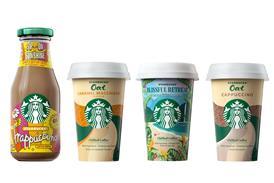
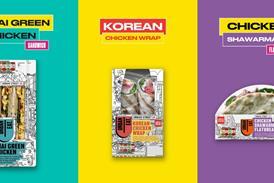
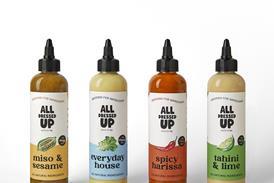
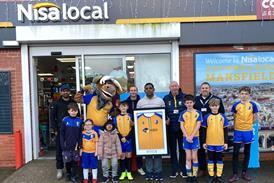








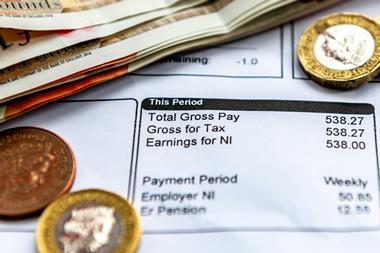
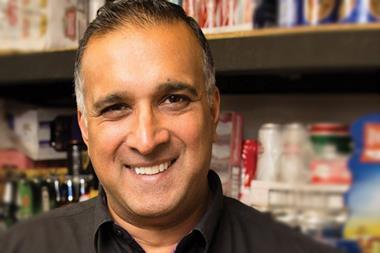


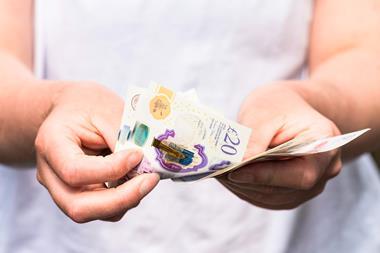

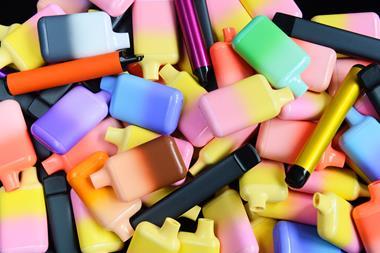





No comments yet